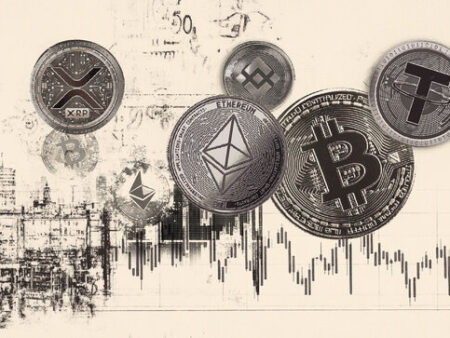Cyberattacks on Financial and Cryptocurrency Sectors Remain High, Report Reveals
The financial and cryptocurrency sectors are still prime targets for cyberattacks worldwide, according to the Data Breach Investigations Report (DBIR) 2025, published by Verizon.
The report indicates that the financial sector was the second most affected by security incidents in the past year, with 3,336 registered cases, 927 of which resulted in leaks of confidential data.
While the industrial sector reported higher numbers, the significant impact on the financial sector raises critical concerns. The constant presence of large sums of money and the vast amount of sensitive personal data of millions of customers make banks and financial institutions particularly attractive targets for cybercriminals.
“The financial sector attracts cybercriminals for two main reasons: high volumes of assets, whether conventional money or cryptocurrencies, and a wealth of personal data, the two ‘cherries on top’ for offenders,” explains Anchises Moraes, a cybersecurity expert at Apura.
Apura, a cybersecurity firm, has contributed data to the DBIR for the 7th consecutive year.
Increased Frequency of Attacks on Financial and Cryptocurrency Institutions
The Apura expert warns that the sophistication and frequency of attacks are increasing, requiring continuous investments in cybersecurity, data protection policies, and training of internal teams.
Exposure to cyber risks, if not properly mitigated, can compromise both the integrity of institutions and users’ trust in digital financial services.
According to Verizon’s analysis, in 2025, system intrusion (unauthorized access for data theft or malware installation), social engineering (manipulating people to obtain confidential information), and simple attacks on web applications (such as exploiting vulnerabilities in websites and emails) accounted for 74% of breaches in the financial sector. Most threats (78%) came from external agents, while 22% were from internal sources and 1% from partners.
The primary objective of these attacks is financial gain, present in 90% of cases, although digital espionage has grown, reaching 12% of motivations.
Regarding compromised information, “personal data” leads with 54% of cases, followed by internal data, other types of sensitive data, and access credentials.
“This shows that criminal groups target both information that enables financial fraud and data that can be marketed or exploited in future attacks,” Moraes emphasizes.
Among the attack methods, it was evident that ransomware and the use of stolen credentials are among the main causes of the violations observed by Verizon, each accounting for 30% of cases, followed by phishing, with 20%.
Ransomware is a type of malware that encrypts the victim’s data, demanding a ransom to release it, while phishing involves sending fraudulent messages to deceive people and steal sensitive information, such as passwords and bank details.
The analysis, enriched by information from Apura Cyber Intelligence, highlights that in Latin America, 657 security incidents were recorded in financial sector companies, with 413 confirmed data leaks.
Central Bank Reported Multiple Flaws Involving Pix in the Last Year
In 2024, the Central Bank reported 12 distinct cases of Pix key leaks involving 12 different financial institutions, with over 260,000 keys exposed.
Although the leaked information is mostly restricted to names, CPF (Brazilian individual taxpayer registry identification), and bank identification data of a relatively small portion of customers, experts warn that such data in the wrong hands can facilitate social engineering scams, such as phishing, and increase users’ vulnerability.
According to experts, the aggravating factor is that companies’ justifications always focus on “isolated system failures,” minimizing the severity and shifting the focus to technical aspects instead of assuming institutional responsibility.
The role of the Central Bank then becomes fundamental: to supervise, educate, publicize cases, and penalize the institutions involved when necessary.
With the popularization of Pix as the preferred payment method for Brazilians, the trend is that criminals will continue to develop increasingly sophisticated methods to exploit any weaknesses in the system.
This highlights the need for continuous investments in digital security and a more active stance by institutions in combating this type of threat.
“The cases flagged in 2024 raise an alert about the importance of coordinated action between regulatory bodies, financial institutions, and technology companies to prevent innovation from being captured by organized crime. The Verizon report demonstrates that these attack vectors also directly affect companies, highlighting the importance of investing in awareness campaigns and training for employees, making the human element less vulnerable,” concludes Anchises Moraes.
Stay ahead of the curve in the fast-paced crypto world – explore the latest updates and trends at Cryptonewsfeeds.com.










